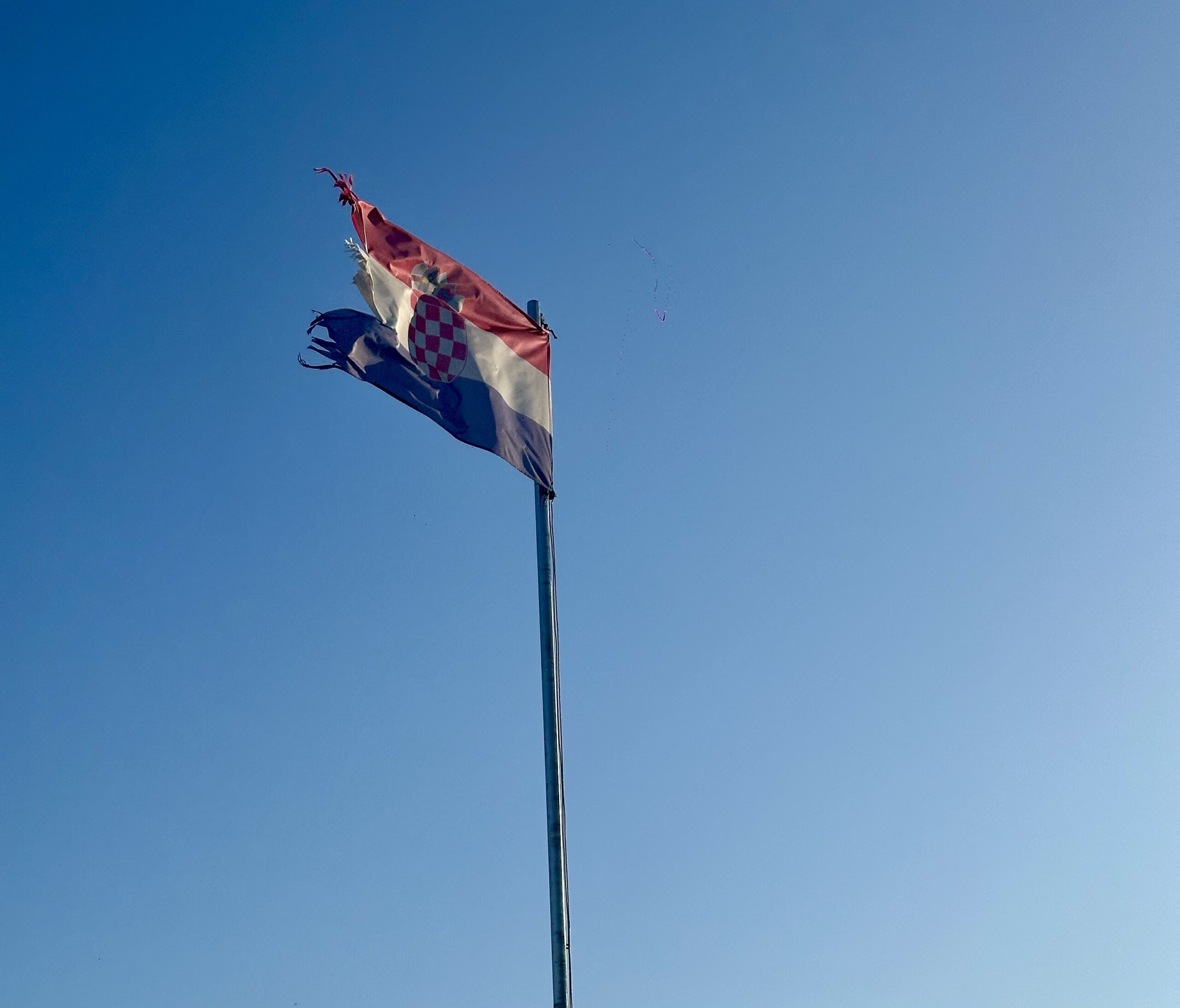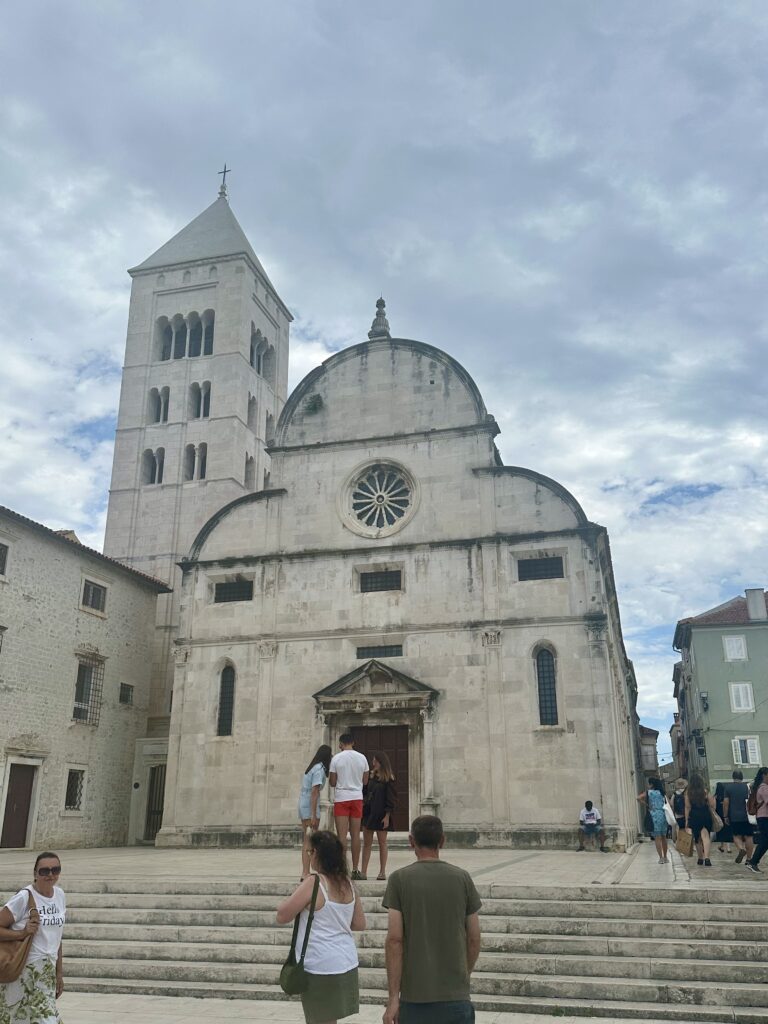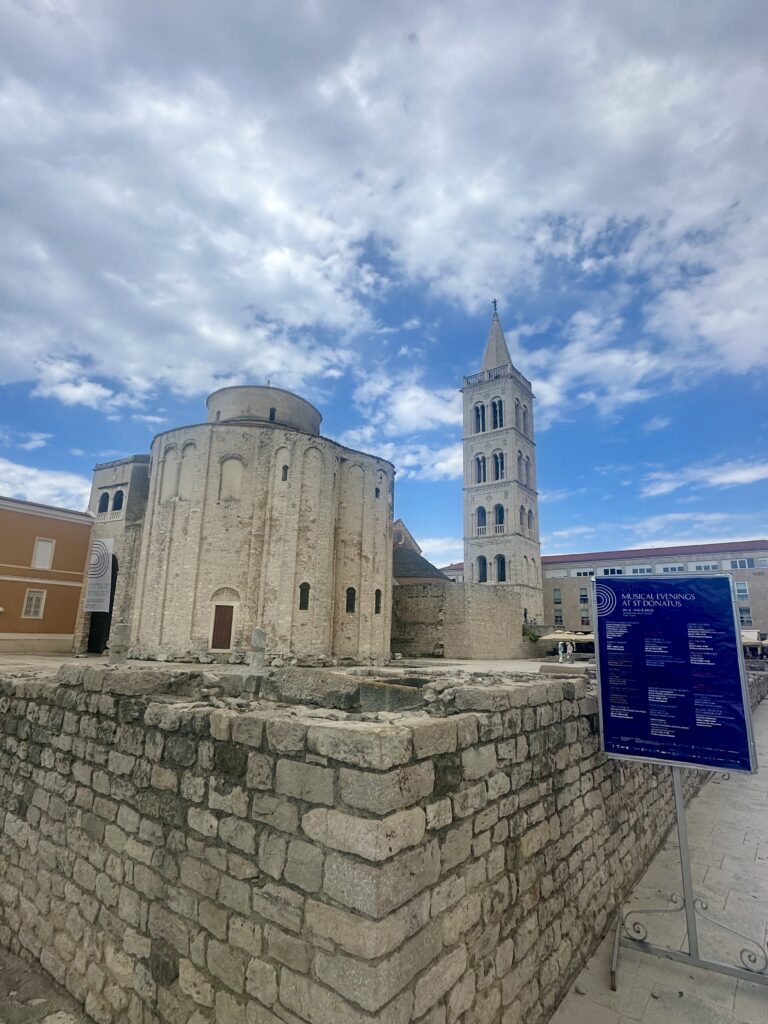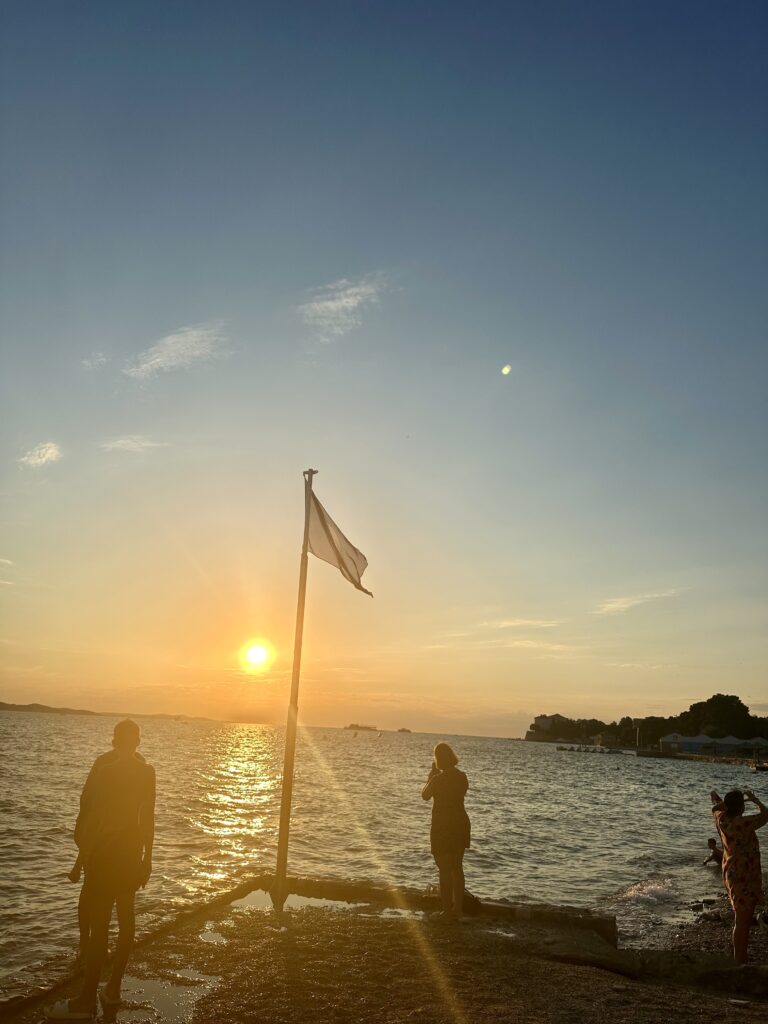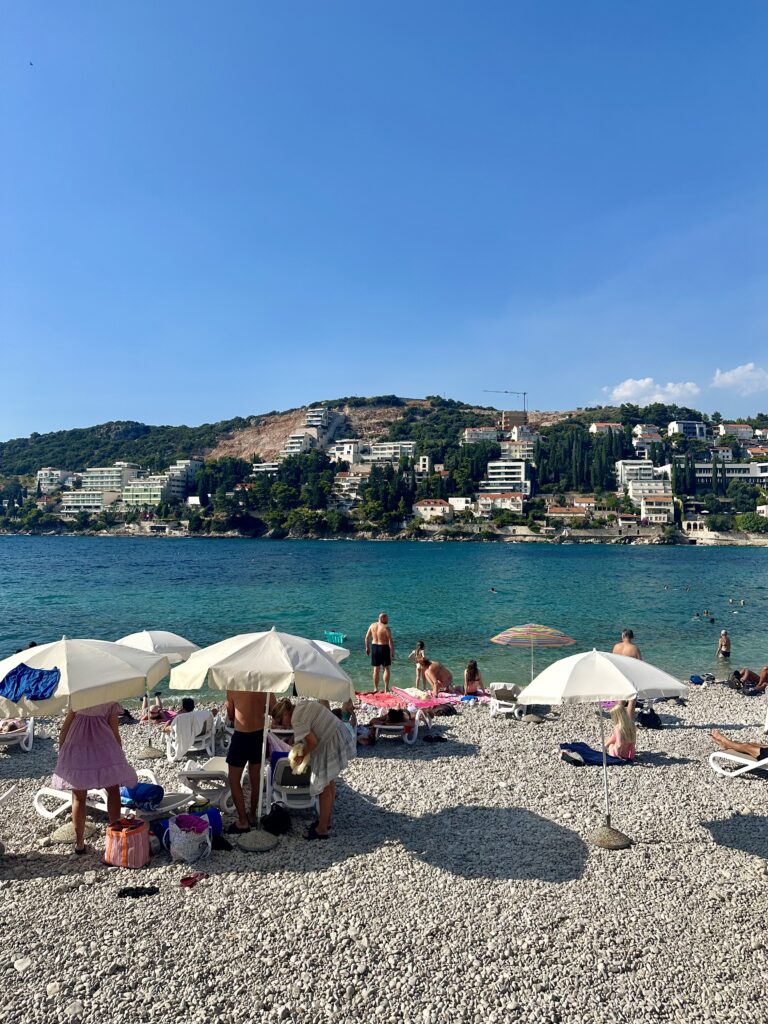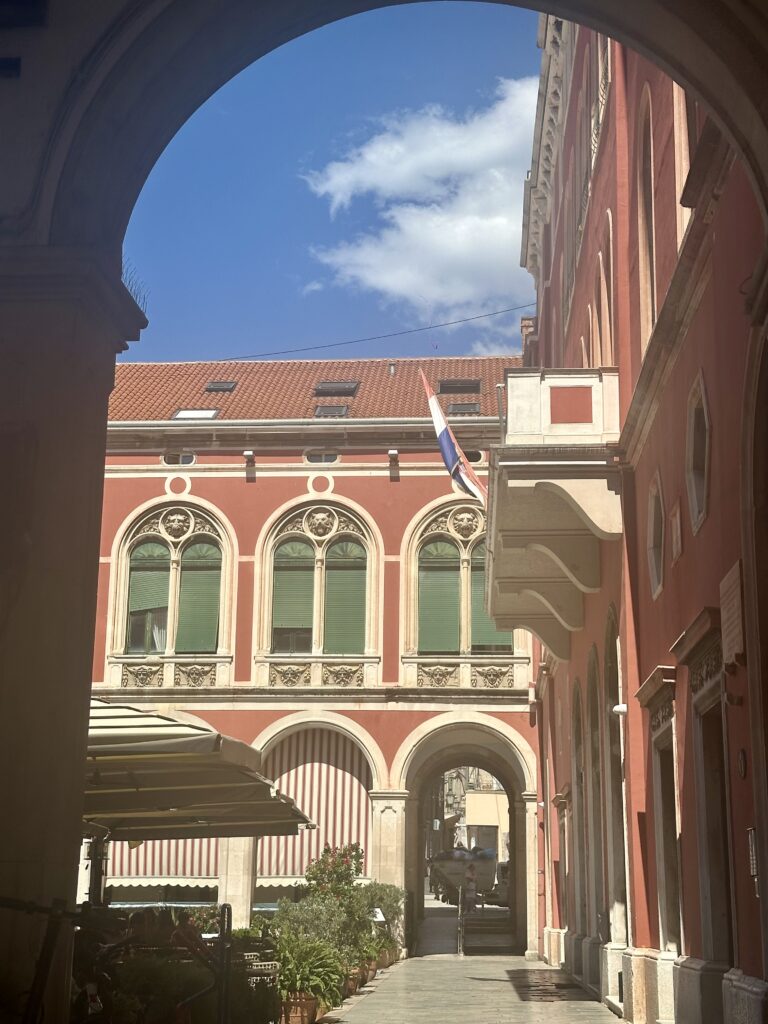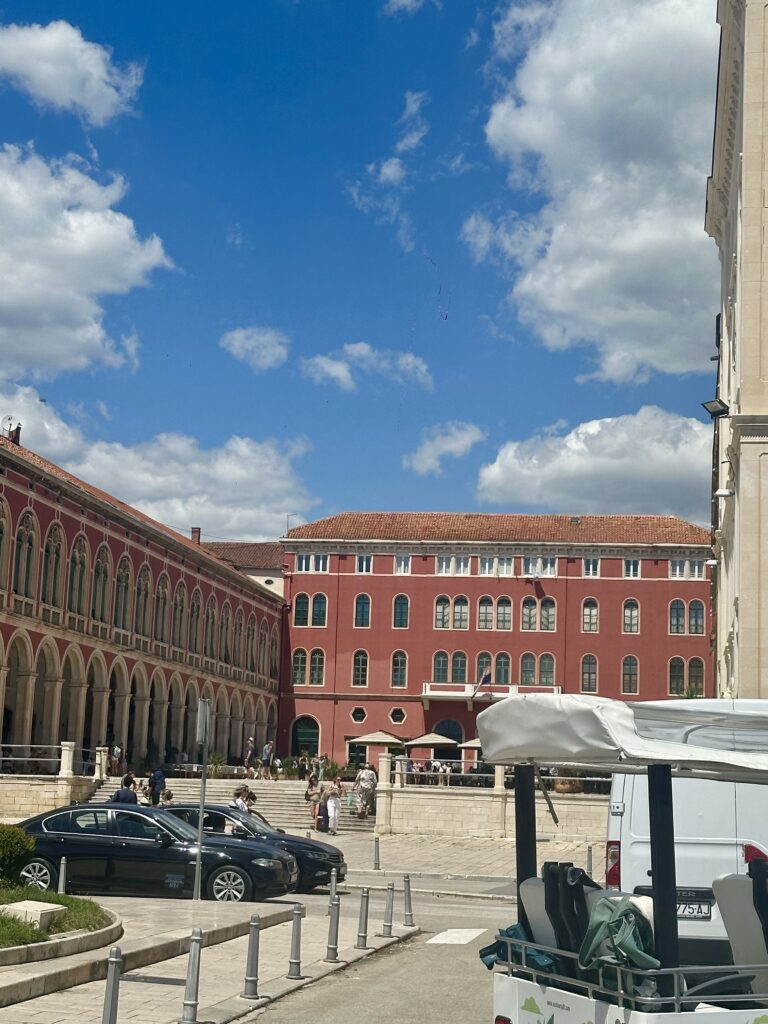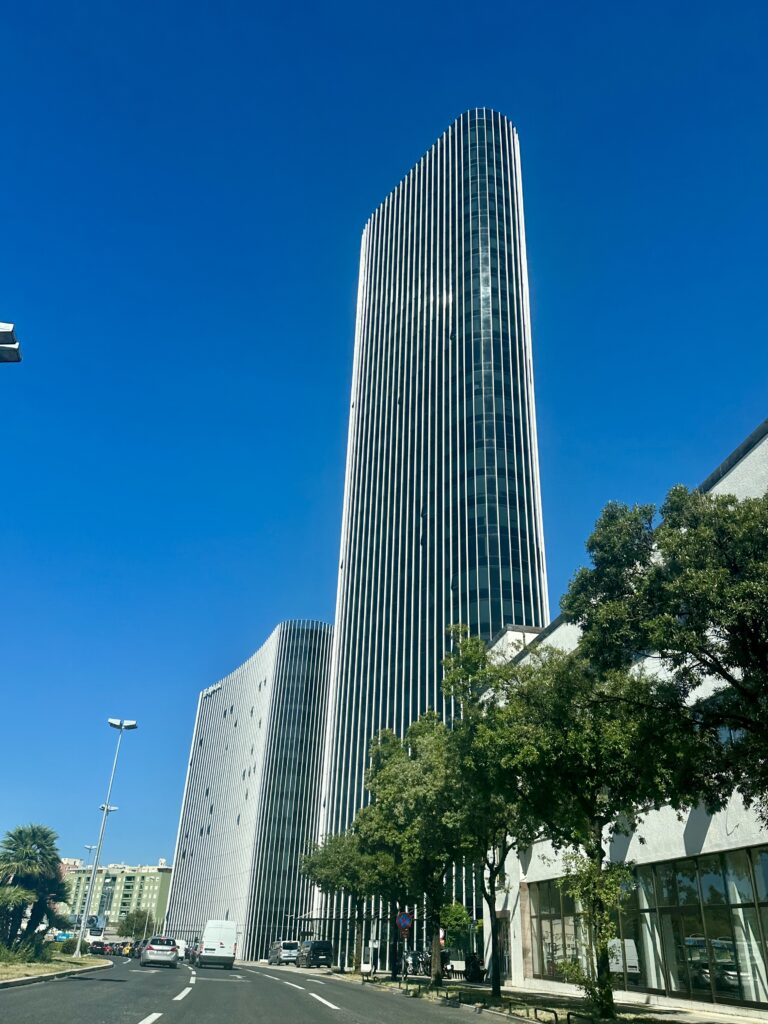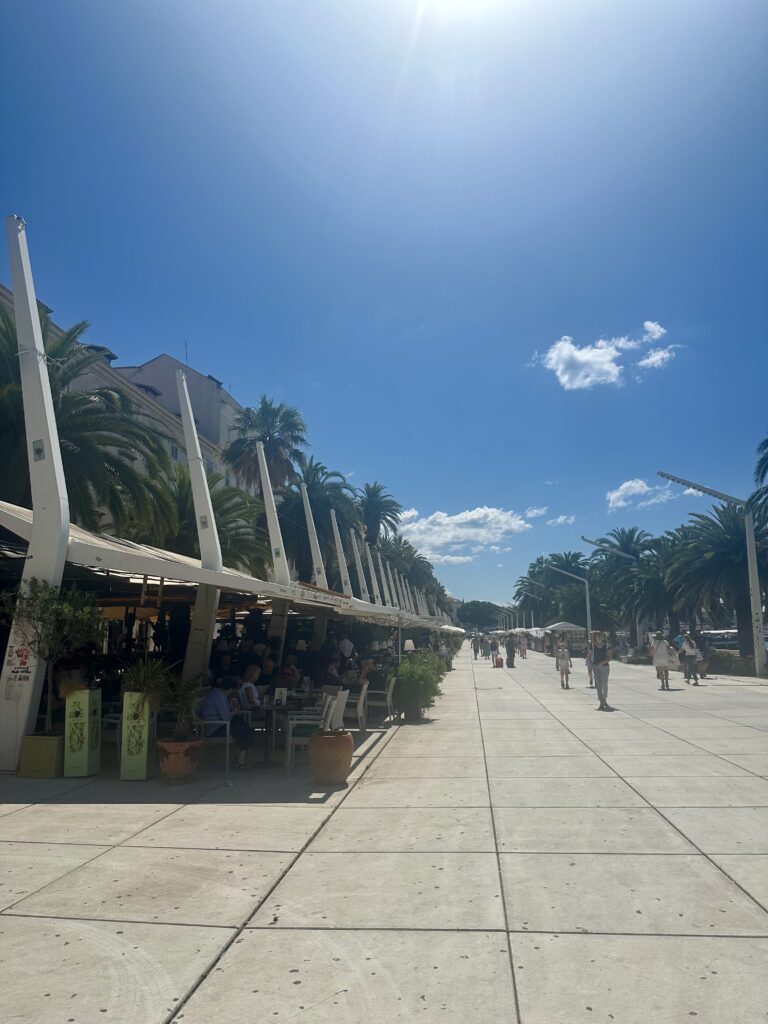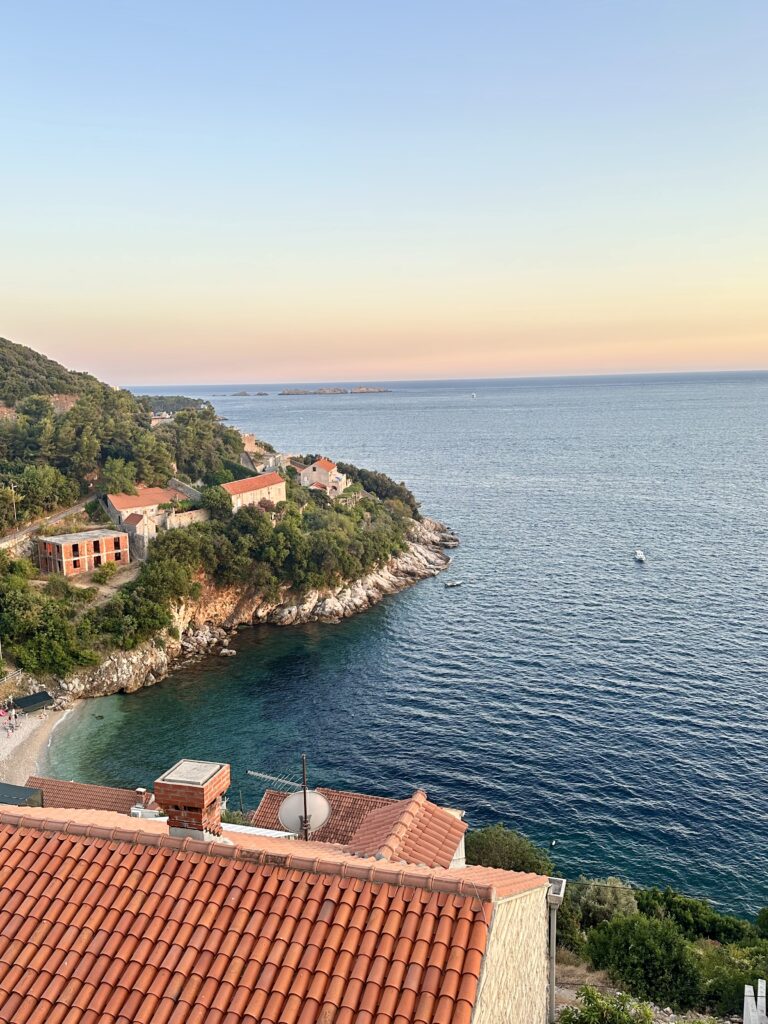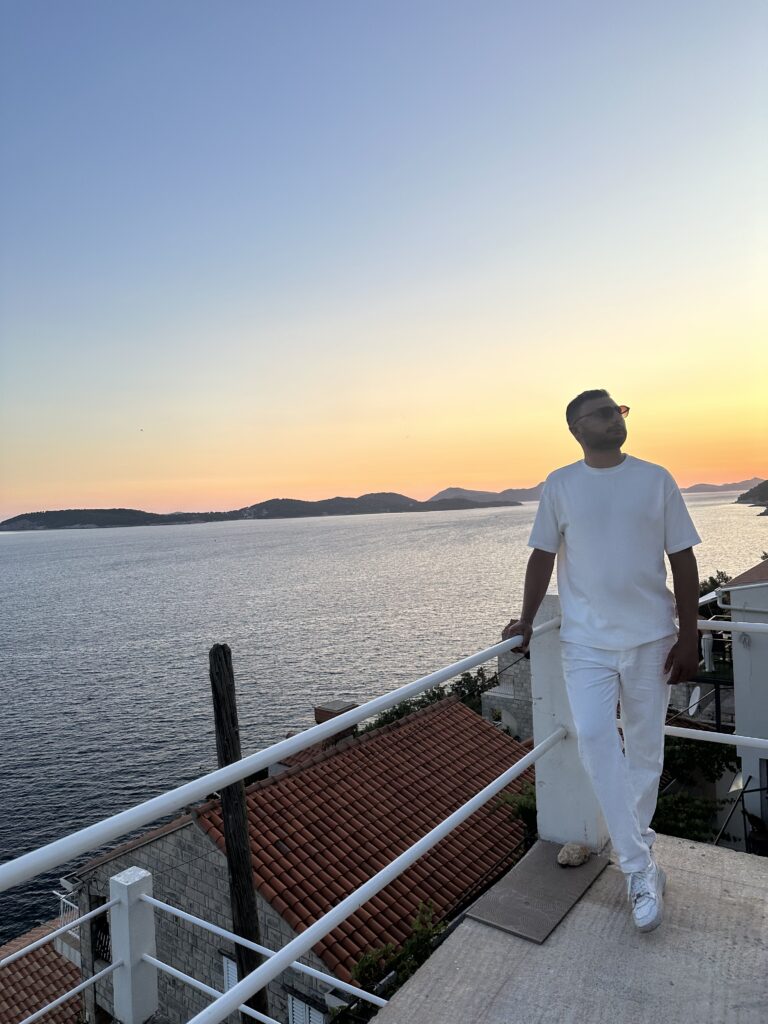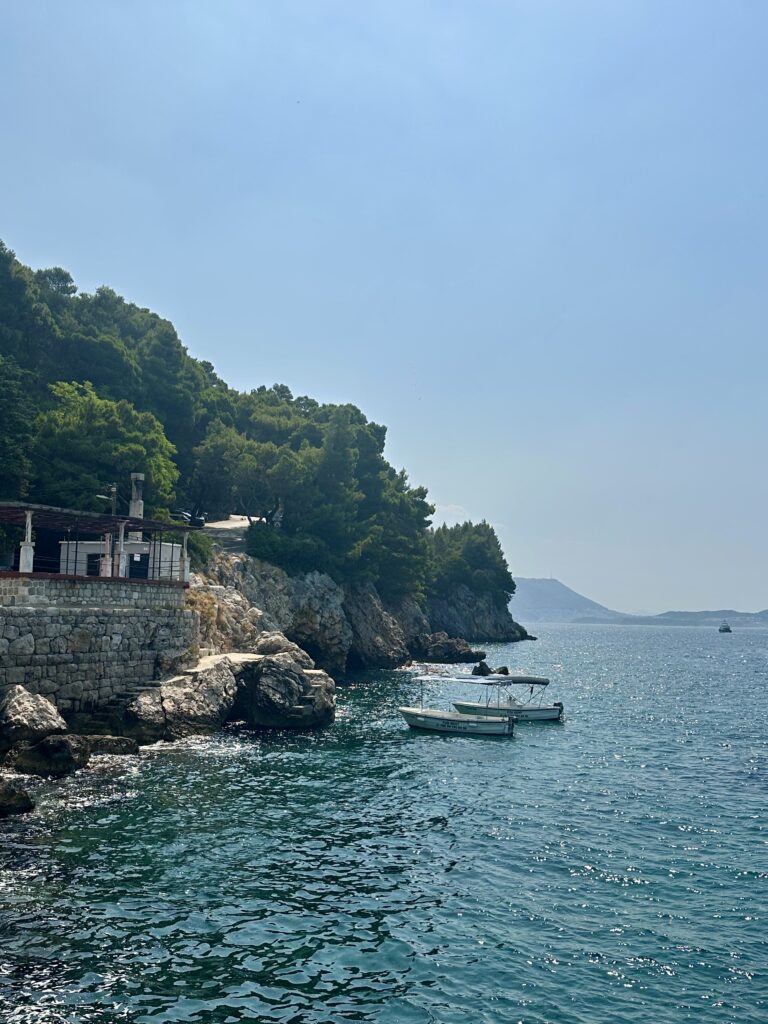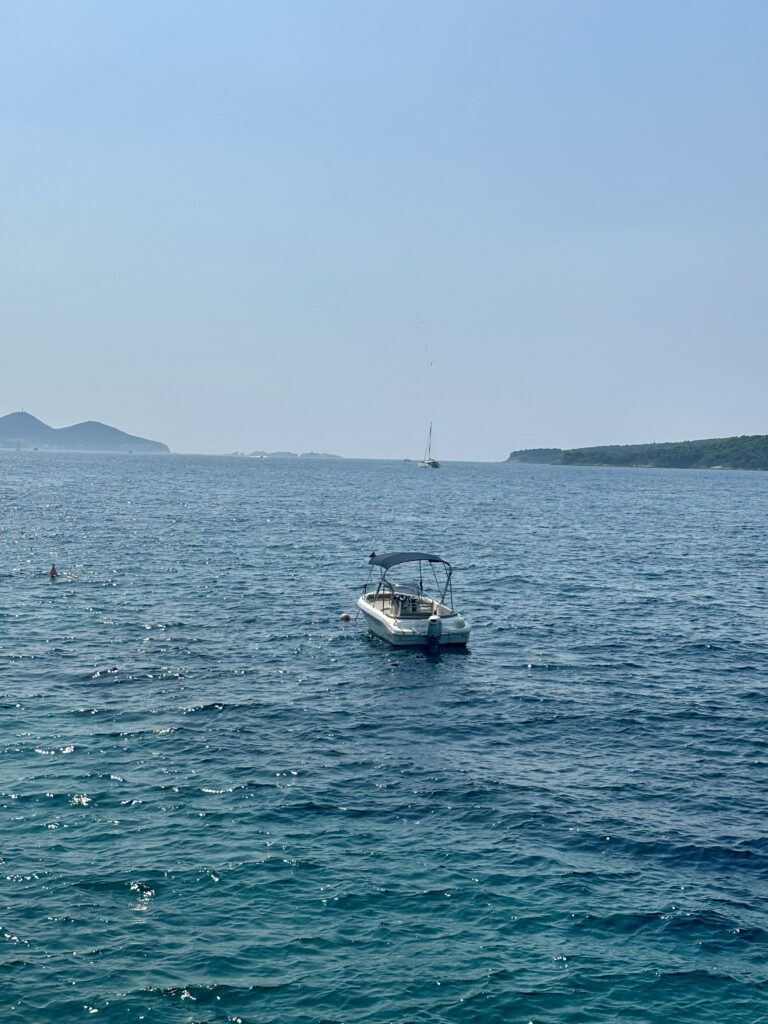I’m delighted to take you on an account of my incredible 15 days journey through Croatia, an adventure that took me from the coastal treasures of Zadar to the vibrant Split, culminating in the majestic Dubrovnik. It was a journey of architectural discoveries, breathtaking landscapes and deep diving into the history and culture of this magnificent country. Hang in there, because I’m going to share with you everything I’ve learned, my favorites, and practical tips for planning your own Croatian getaway and making the most of it!
Things to visit in Zadar: The Discreet Charm of the Adriatic
My trip began in Zadar, a charming city often overshadowed by its more famous counterparts like Dubrovnik and Split, but which gave me wonderful surprises. Nestled along the beautiful Adriatic coast, Zadar stands as a testament to Croatia’s rich history and vibrant culture.
What I found particularly captivating was its unique blend of ancient Roman ruins, medieval churches and modern architectural marvels. With its crystal clear waters, picturesque sunsets and warm Mediterranean climate, Zadar really invites travelers to explore its hidden treasures. My first observation was that Zadar is a smaller version of Split and Dubrovnik, with fewer people and a more relaxed atmosphere, making it an ideal place to start a Croatian stay without the rush of big cities.
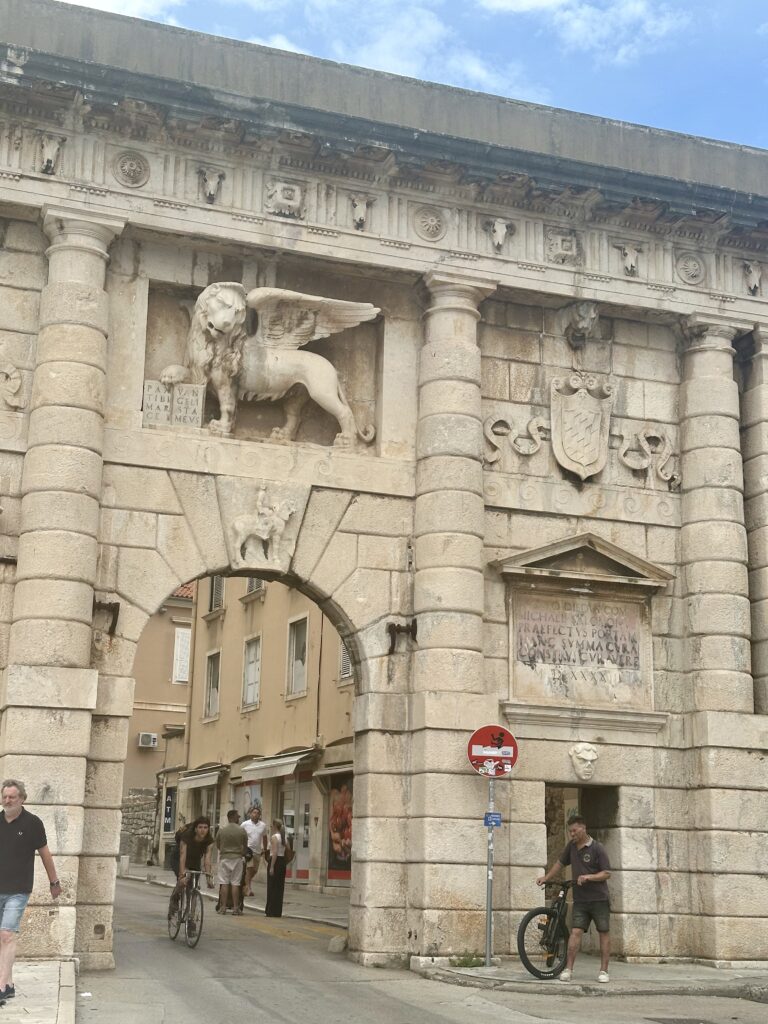
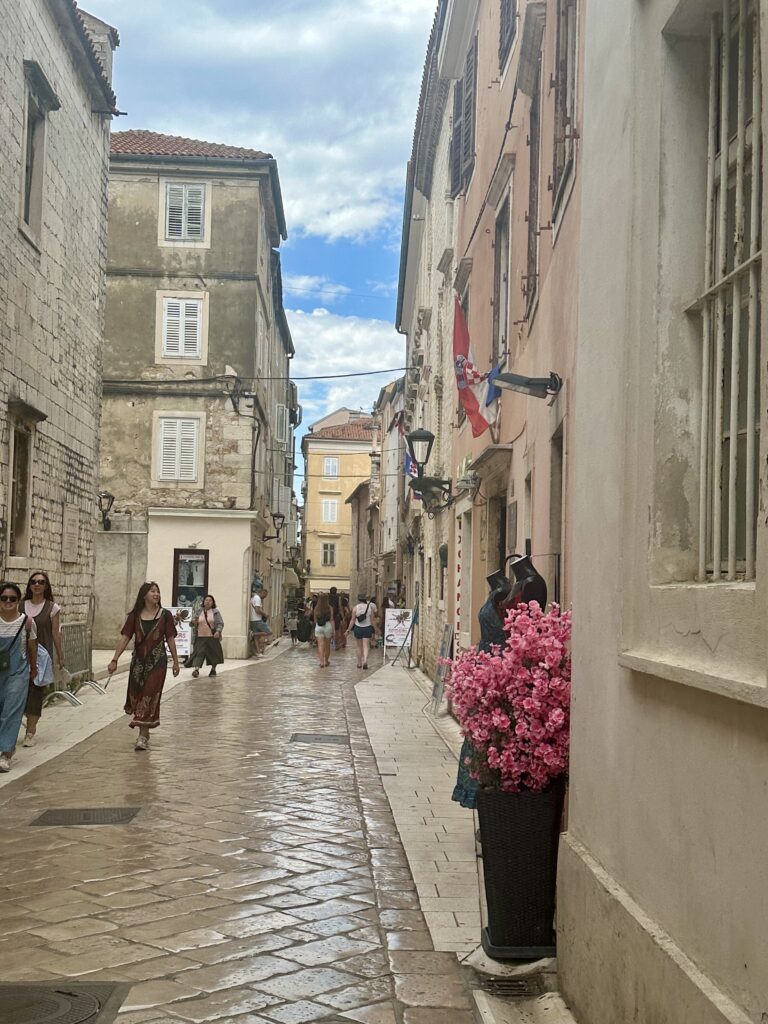
Modern Wonders: The Sea Organ and Greeting to the Sun You can’t talk about Zadar without talking about its most famous attractions, true masterpieces of acoustics and design. The Sea Organ, designed by local architect Nikola Bašić, extends along the north-western edge of the Zadar peninsula. It is composed of a series of marble steps that descend into the Adriatic Sea and which, thanks to underwater tubes, produce a soothing melody under the action of the waves. I was fascinated by how the sound of the organ becomes louder when the sea is more rough.
Delving into Roman and Medieval History Going back in time, I explored the remains of the ancient Roman Forum, an impressive testimony to the importance of the city during the Roman Empire. Located in the heart of the old town, the forum was once the centre of public life, hosting markets, public speeches and religious ceremonies. What is really striking in Zadar is how these Roman ruins seem to blend directly into the streets of the city; they are literally in the open air and scattered everywhere, which is very cool.
The religious heritage of Zadar is also very rich and diverse, with many churches. The Church of St. Donat stands out as one of the most significant examples of Romanesque architecture in Dalmatia. Its unique circular design and massive proportions make it a must-see landmark of the old town. For a 360-degree panoramic view of the old town, the Adriatic Sea and the nearby islands, I climbed the bell tower of St. Anastasia. One can also combine this visit with that of the Cathedral of Saint Anastasia, which, although heavily bombed during the Second World War, was rebuilt.
Strolling and the Local Atmosphere No visit to Zadar is complete without a walk along Kalelarga Street, the main artery of the city for over two millennia. Stretching from the Earth Gate to the forum, this bustling street is lined with cafes, shops and local artisans, offering a blend of history and modern charm. In summer, it comes alive with street artists and the buzz of locals and tourists, making it the perfect place to observe people and enjoy the Mediterranean vibes.
La Riva, the seafront promenade of Zadar, offers a delightful way to discover the coastal charm of the city. Stretching along the western edge of the peninsula, this footpath offers breathtaking views of the Adriatic Sea and nearby islands. Walking along the Riva, I encountered a mix of historic buildings and modern facilities. The defensive walls and gates of Zadar, remnants of its turbulent past, offer a glimpse into the strategic importance of the city throughout history. Walking along the remaining sections of the city walls offers panoramic views of the old town and the Adriatic Sea.
These fortifications, which once protected Zadar from invaders, now serve as a picturesque backdrop for photographs and a reminder of the city’s resilience. To really understand the complex history of Zadar, I highly recommend taking a guided walk; I found that an hour and a half walking tour of the old town would have been very useful for deepening my knowledge.
Things to visit in Split : The Vibrant Capital of Dalmatia
After exploring Zadar, I headed to Split, the second most populous city in Croatia after the capital Zagreb. It is rich from a historical and architectural point of view, thanks in particular to its different Venetian, Hungarian, French, Yugoslavian and other influences. I was quickly seduced by its festive atmosphere and its historic center. I also learned that its strategic positioning allows it to discover a multitude of sites and natural parks, which makes it an ideal base to explore the region.
The Palace of Diocletian is the entire historic center that constitutes the palace. To discover all its little secrets, I opted for a pass that cost me 80 kunas, about 10 euros, and which allows access to several historical monuments. I notably climbed the cathedral and the mausoleum of Diocletian; after a little exercise, I was able to admire a splendid view over all of Split. Just downstairs, next to the crypt, there is an absolutely great underground that is full of small stalls to buy souvenirs.
I also discovered the Republic Square, which was designed to resemble Saint Mark’s Square in Venice. I must admit that I found her very pretty!
Ambiance and Gastronomy Split On the gastronomy side, I was disappointed by the restaurants which, despite promising menus and sometimes high prices, offered dishes sorely lacking freshness and character. Behind the advertisements of local products or fish of the day, there were often frozen foods, reheated or prepared from industrial bases, giving a bland texture and a uniform taste. Vegetables rarely accompanied the season, desserts seemed to come out of a package rather than from an artisanal pastry shop, and the whole thing left an impression of standardized cuisine, thought above all to serve quickly and a lot, rather than to discover the true culinary wealth of the country.
Summer in Split is very lively. I had the opportunity to attend the ultra European festival.
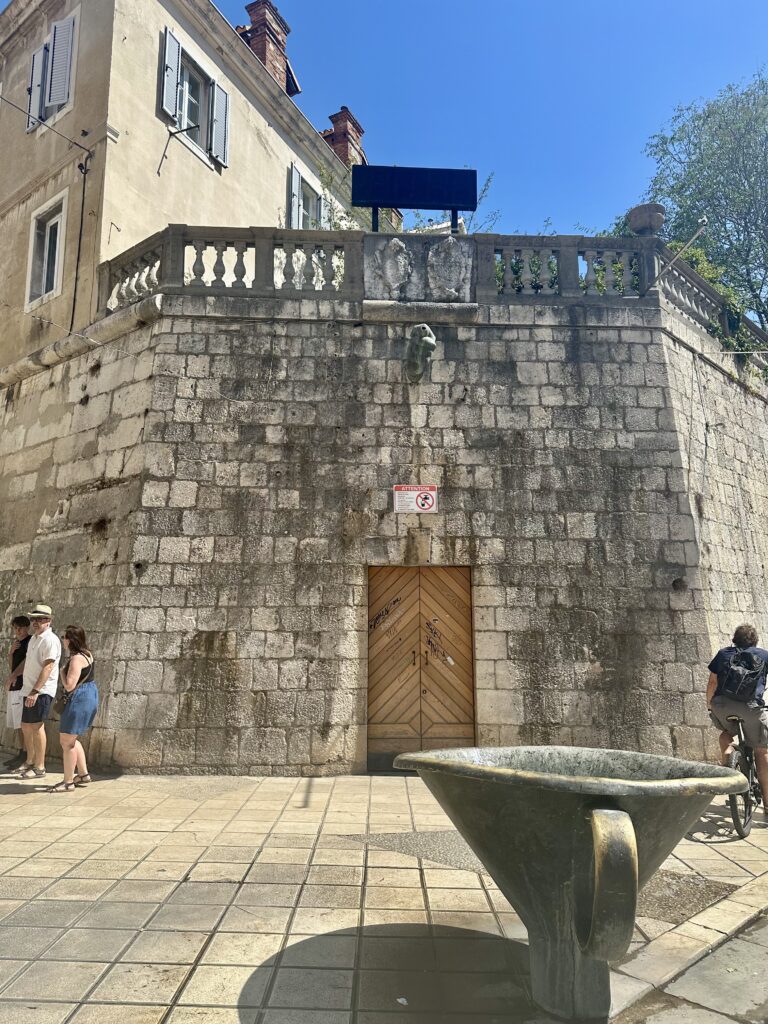
Things to visit in Dubrovnik : The Pearl of the Adriatic
My Croatian journey ended in Dubrovnik, the most popular tourist site in Croatia. This city, known for its old town surrounded by walls dating back to the 16th century, is nestled at the foot of a mountain on the shores of the Adriatic Sea and attracts 80% of tourists from the country. I learned that Dubrovnik was almost demolished during the war in the early 90s, then completely renovated, which makes its charm today. It is considered the most picturesque city on the Dalmatian coast thanks to its stunning architecture, magnificent landscapes and ancient walls that once protected the Republic. It is also nicknamed the Citadel of the Adriatic.
Immersion in the Old Town and its Ramparts : The main entrance of the old town is the Pile Gate, from there I was able to discover its main street, the Stradun, lined with shops and restaurants. At the entrance, I saw the fountain of 1438, which served as a reservoir for water drawn from 12 kilometers away. The streets and numerous alleys paved with limestone make all the charm of Dubrovnik.
The old town is the beating heart of Dubrovnik and usually the first place one visits in Croatia. Classified as a UNESCO World Heritage site, it is full of historical monuments, such as the magnificent ramparts and the Rector’s Palace. Although it is pleasant to walk in the marble-paved squares and streets, I highly recommend taking a guided walking tour to understand the history and culture of Dubrovnik at a deeper level.
The essential thing is to go around the city ramparts, which are still 2 km long. It only goes up and down, so it’s better to prioritize the morning, because in the heat, it might be exhausting. This circuit on the ramparts offers magnificent views of the city, the sea, the alleys, the port, and even a beautiful island in the distance. It takes about one to two hours to complete the circuit along the thick ramparts.
The most amusing aspects of the walk are the towers, forts and hidden corners that one can find, as well as the insights it gives you in the inner courtyards. I paid about 30 euros for the entrance, which is quite expensive, but it also includes Fort Lovrijenac. If you are only there for a day or two, the Dubrovnik Pass can be interesting because it includes many different things in the old town at one price.
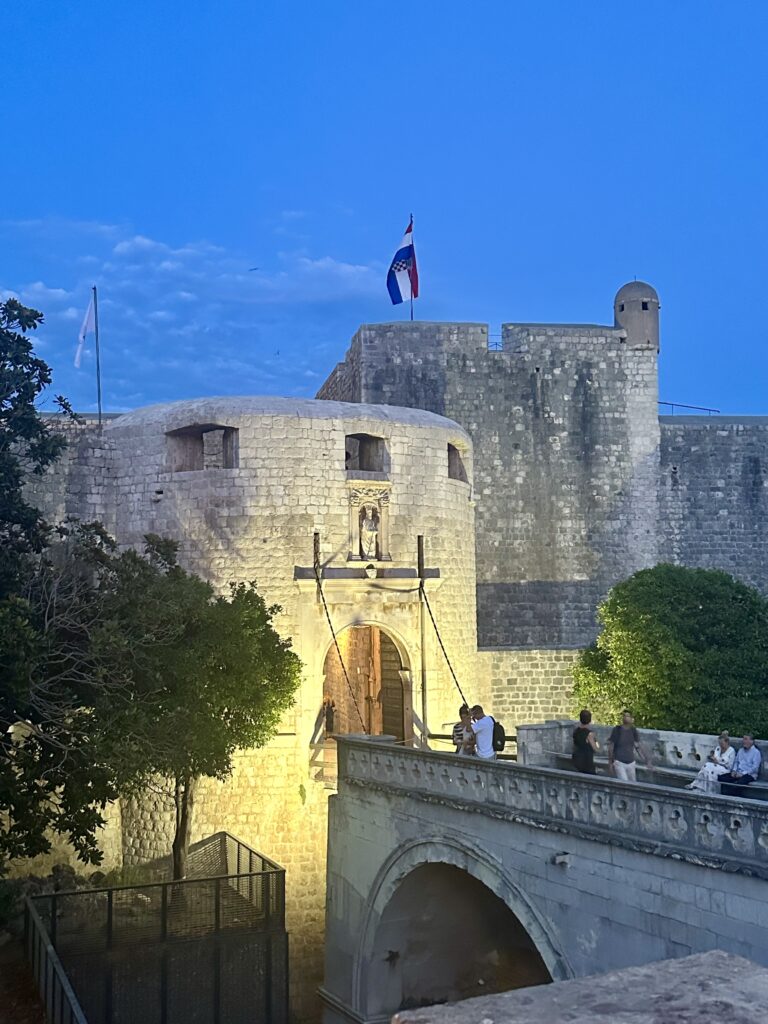
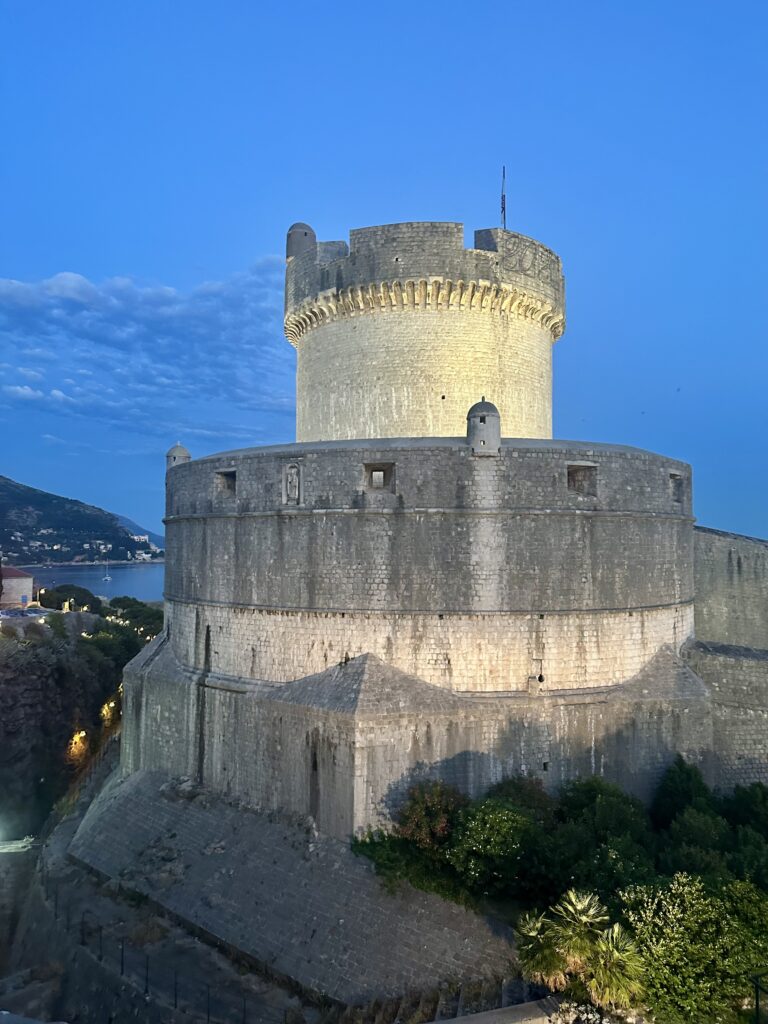
The Rector’s Palace and the Churches : The Rector’s Palace was the seat of government when Dubrovnik was an autonomous republic. It is an architectural masterpiece and today houses the cultural history museum, where one can see how local aristocrats once lived, as well as artifacts from the city’s history. In the old town, I found many beautiful Gothic, Renaissance and Baroque churches nestled in small alleys and squares. My favorites include the cathedral of Dubrovnik, the church of St. Blaise, the church of the Holy Annunciation, and especially the church of St. Ignatius, for its beautiful frescoes on the high altar.
Dubrovnik at the Cinema and beyond Dubrovnik is famous as an iconic filming site for the series Game of Thrones, but also for sequences of Star Wars, James Bond, and Robin Hood Origins. The inhabitants are very proud to see their city used as a setting for cinema, and in low season, it is often the inhabitants who serve as extras, which seems to amuse them a lot. Even if one is not a fan of Game of Thrones, the visit on this theme is pleasant, and the guides sometimes explain the tricks used to hide certain details.
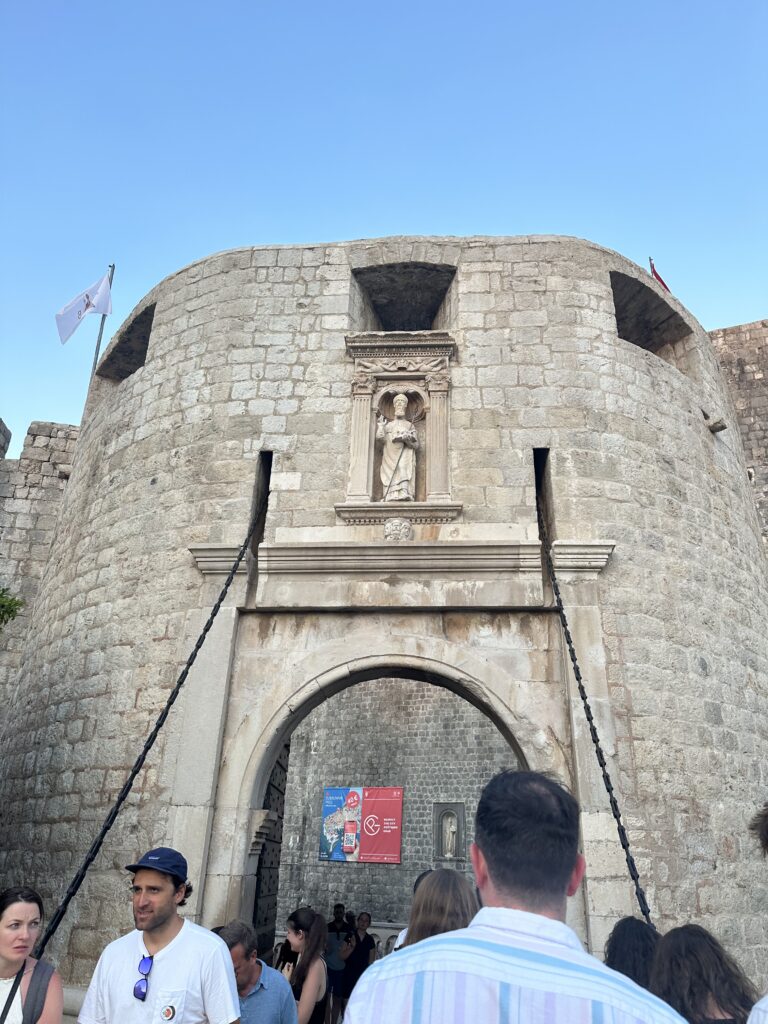
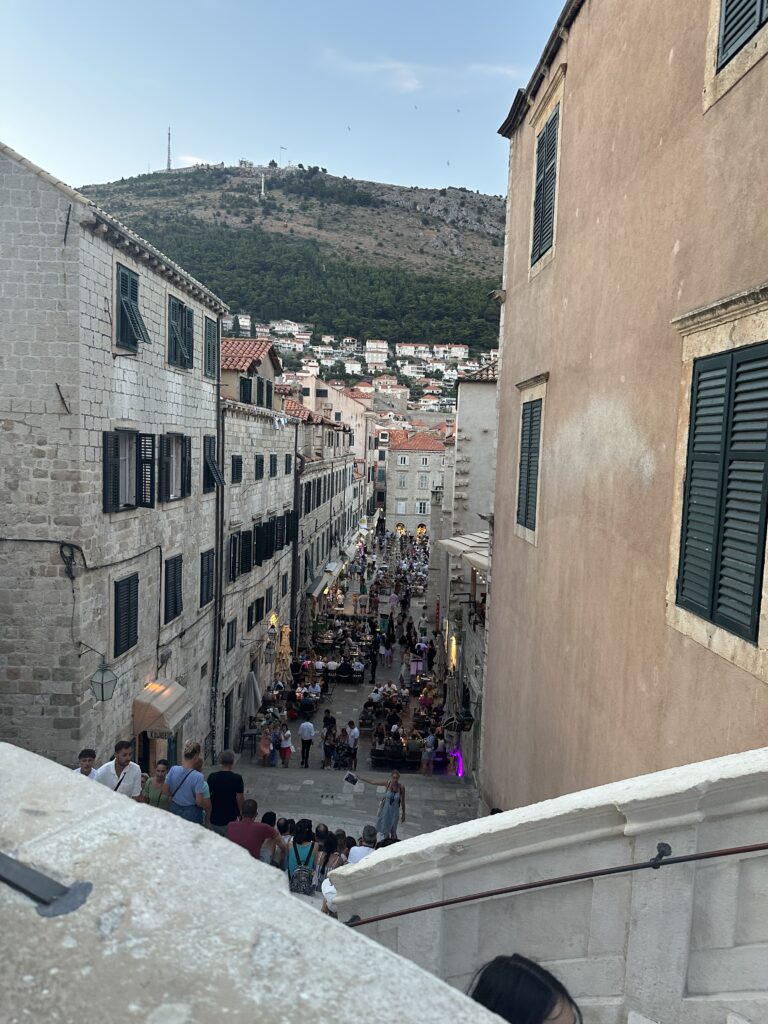
This city is indeed timeless, and we quickly realize that we can believe ourselves in any era. Fort Lovrijenac is one of the most emblematic sites of Dubrovnik. It is worth visiting not only for the many scenes of Game of Thrones that were filmed there, but also for the incredible view it offers on the old town. For the best view of the old town, in my opinion, one should head towards the hill above the beach of Banje.
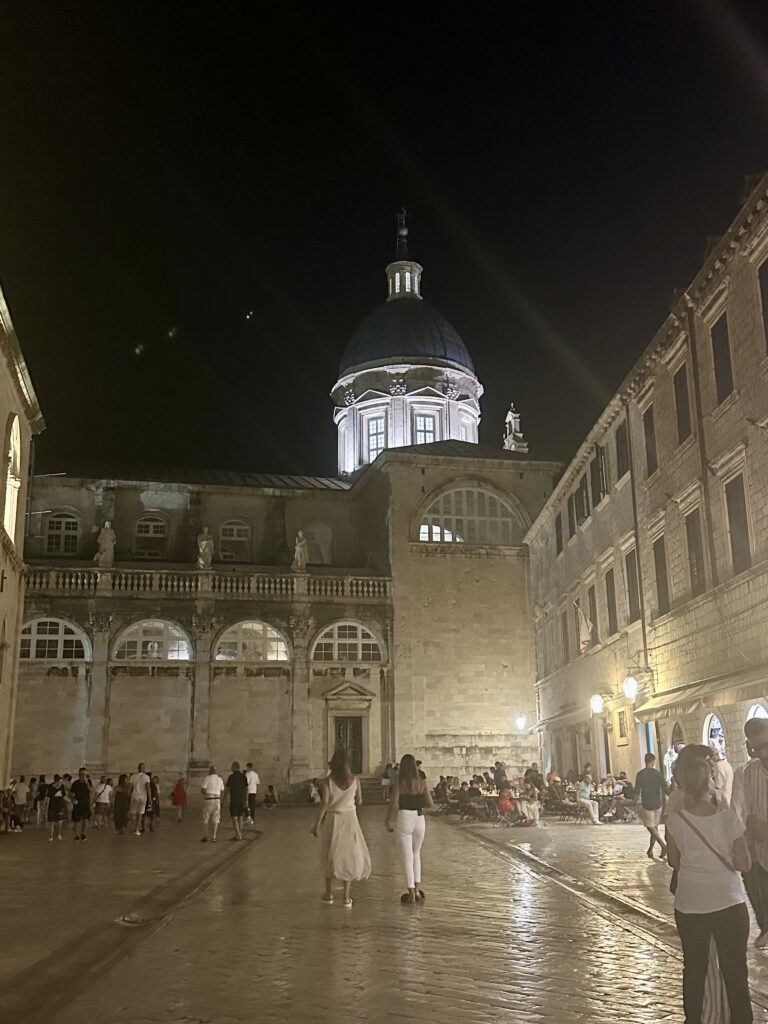
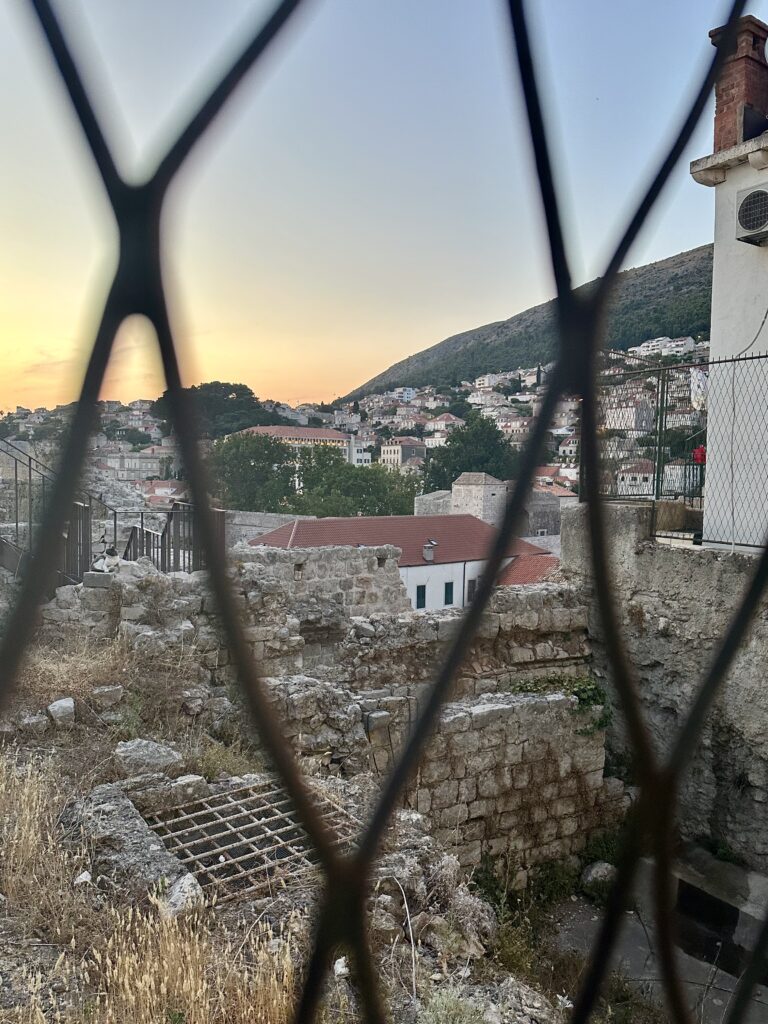
This 15 days trip in Croatia, from Zadar to Split and Dubrovnik, was an unforgettable experience. Each city has its own identity, offering incredible cultural and natural wealth. I hope this detailed account and my advice will inspire you for your next Croatian adventure. Feel free to plan your own adventure and explore the hidden treasures of this beautiful Adriatic coast. Croatia is waiting for you.
